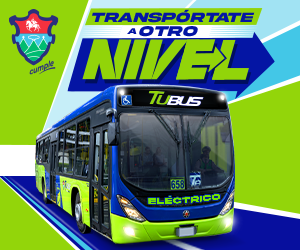The control established by Costa Rica at land borders, as part of a measure to prevent the spread of Covid-19 and the response by the government of Nicaragua, causing more than 1,600 trucks to be stranded, has led businessmen in the sector to think that the alternative, the most viable way to solve the problem, is to launch the ferry project between El Salvador and Costa Rica.
The ferry project was to have started in 2015, but remained anchored in red tape. The project was revived in 2018 during the sociopolitical crisis in Nicaragua, trapping thousands of truckers without being able to reach their destinations. But the ferry never left port.
Silvia Cuéllar, executive director of the Exporters Corporation of El Salvador (Coexport), said on Tuesday, May 19, that it is time to look for the conditions to push the ferry project, because that would be a viable alternative at the moment.
“Of the 1,600 containers that are stranded in Costa Rica, 40% are from El Salvador, the trade we have with Costa Rica is very dynamic and this type of measure seriously affects us. You know that we have been planning the ferry for a long time, it would be a very good alternative, if it were already working,” she said.
In May 2019, Costa Rica President Carlos Alvarado said that the ferry will help minimize the risks in ground transportation.
“It would be consolidated as a definitive and sustained alternative over time to help minimize the risks associated with land transportation in the Central American region,” said Alvarado.
Since 2018, when the crisis began in Nicaragua, Central American land transport saw that it was necessary to have an alternative route. That encouraged several shipping companies in El Salvador and Costa Rica to reactivate the ferry project, which in addition to significantly shortening the time to move cargo, would ensure that in future new obstacles to land circulation in the region (like now) there would be an alternate route assured.
The governments of Costa Rica and El Salvador made efforts at that time to provide facilities and conditions that would have allowed the ferry to operate, but it is up to the interested companies that must put it to work, the Costa Rican presidency clarified at the time.
El Salvador waiting on Costa Rica
– paying the bills –
The Coexport director said that to streamline the process, Puerto Caldera is no longer being considered, but rather Puerto Golfito, which does have the conditions for the docking of the ferry.
In June 2019, an agreement was struck in a bilateral meeting held in El Salvador between the President of El Salvador, Nayib Bukele, and Costa Rican officials, including Juan Ramón Rivera, executive president of the Costa Rican Institute of Pacific Ports (Incop).
In January, the government of El Salvador inaugurated the port facilities, with an investment of US$200,000 dollars, to operate the cargo ferry between the Pacific ports of La Unión, in El Salvador and Puerto Caldera, in Puntarenas.
Rivera explained on January 24, in El Salvador, that Costa Rica is expecting to finalize a US$350,000 dollar loan from the Central American Bank for Economic Integration (CABEI) to prepare the Caldera port.
On the same days, Rivera said that if everything goes as planned, the country would have operational capacity in a period of close to 6 months.
“We hope that in six months, maximum, we will be ready in Costa Rica to operate the ferry. We are preparing to award the construction of the property where it will operate,” said Rivera, in statements replicated by the media elsalvador.com.
The benefits
The objective is for the ferry to navigate the Pacific Ocean between Puerto La Unión, El Salvador, and Puerto Caldera, Costa Rica, and reduce to 16 hours a journey that takes days by road.
According to forecasts, the ferry could transport 100 trucks and would have a stay in each port of between 4 and 6 hours, for loading and unloading.
By land, each trucker has the capacity to make only a few trips per month between El Salvador and Costa Rica, but by ferry, it would double there would be a higher speed of movement of cargo between both countries.
Proof of this is that, by land, it takes about eight days to move a load between both countries: four one way and four for return, while by sea maritime it is 48 hours: one day out and one day back.
One of the attractions of the ferry is the lower cost.
By land, an average of US$1,500 per load, but by sea it would US$750 for a contained and US$850 for tractor and trailer. The latter does not include the cost of transport from the customer and to and from the respective docks.
Also, the decongestion of the border posts, the reduction of procedures, the impact on the roads, as well as on the fleet used to transport cargo.
The ferry would also provide safety for the drivers, limiting their exposure to dangers on the roads and travel through unsafe areas along the route.
What was to have been
Back in 2015, Sebastián Urbina, the deputy Minister of Transport, said: “Starting in January (2016), three weekly ferry services will be provided between both countries.”
The second phase of the ferry project would have added a tourism component.
Source: El Salvador News.






































